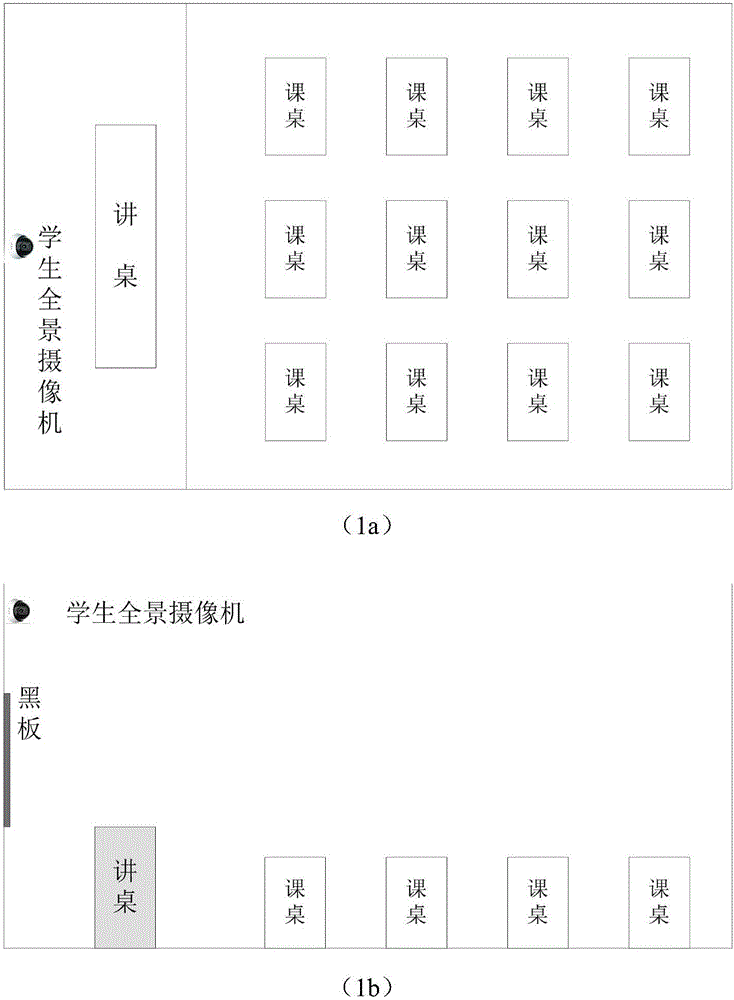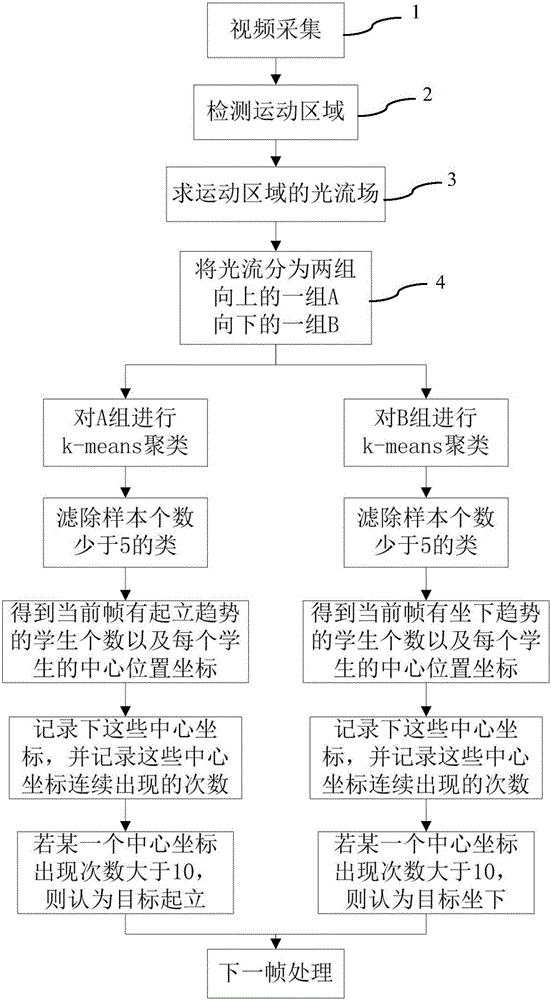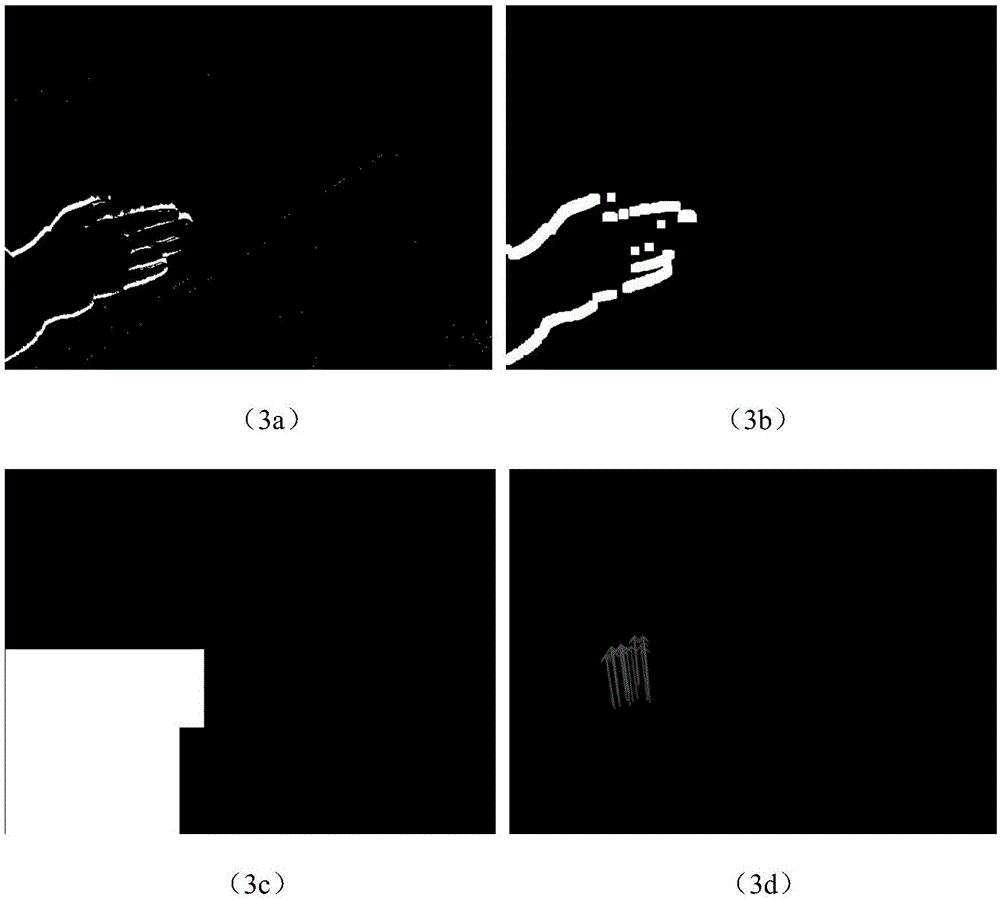Multi-student standing and sitting detection method based on optical flow and k-means clustering
A detection method and a student's technology, applied in the field of information teaching, can solve the problems of complex installation and wiring, not beautiful, high cost, etc., and achieve the effect of high detection accuracy, good real-time performance, and simple equipment
- Summary
- Abstract
- Description
- Claims
- Application Information
AI Technical Summary
Problems solved by technology
Method used
Image
Examples
Embodiment Construction
[0020] Embodiments of the present invention will be described in detail below in conjunction with the accompanying drawings.
[0021] Such as figure 1 Shown is a schematic diagram of camera installation according to the embodiment of the present invention. The camera is installed above the wall in front of the middle school student area in the classroom, and the location is not limited; you can also choose a suitable place for installation.
[0022] Such as figure 2 Shown is the flow chart of the multi-student sitting-up detection method based on optical flow and k-means clustering of the present invention, specifically comprising the following steps:
[0023] Step 1. Video collection: start the camera, collect the video information of the student area, and send it to the analysis and processing system;
[0024] Step 2. Detection of motion area: detect the motion area of the student area, and detect the motion area in the image by the inter-frame difference method: calcu...
PUM
 Login to View More
Login to View More Abstract
Description
Claims
Application Information
 Login to View More
Login to View More - R&D
- Intellectual Property
- Life Sciences
- Materials
- Tech Scout
- Unparalleled Data Quality
- Higher Quality Content
- 60% Fewer Hallucinations
Browse by: Latest US Patents, China's latest patents, Technical Efficacy Thesaurus, Application Domain, Technology Topic, Popular Technical Reports.
© 2025 PatSnap. All rights reserved.Legal|Privacy policy|Modern Slavery Act Transparency Statement|Sitemap|About US| Contact US: help@patsnap.com



